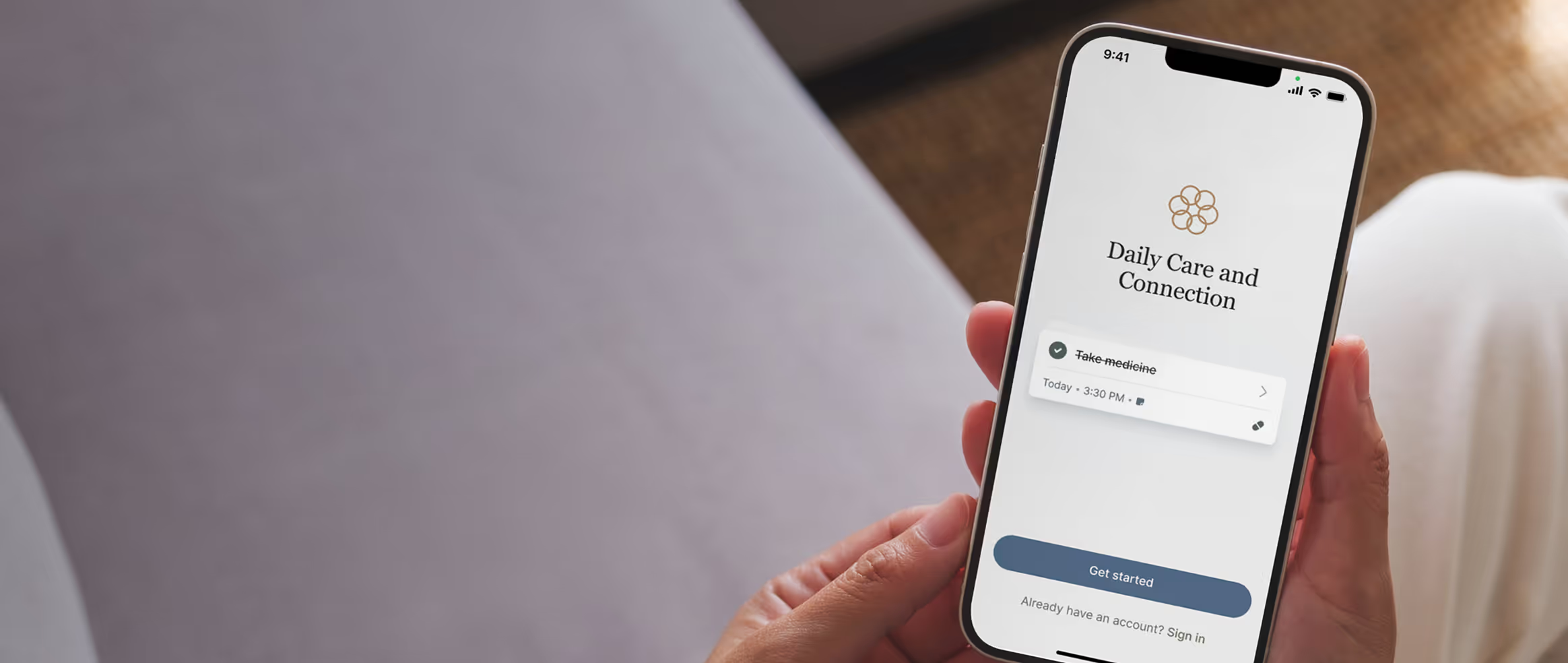From Perk to Priority: How Caregiving Benefits Are Reshaping the HR Landscape

Introduction
The world of work is changing, and so are the people who make it run. Behind today’s workforce is a powerful, often invisible force shaping company culture, productivity, and retention: caregiving.
Once viewed as a personal challenge to manage outside of work, caregiving has become a defining workforce issue, one that’s now reshaping how employers think about flexibility, benefits, and well-being.
According to a Harvard Business School report, 73% of U.S. employees have some kind of caregiving responsibility, whether for children, aging parents, or others in need of ongoing support. At the same time, AARP states 61% of family caregivers are also employed full-time.
For HR leaders, the message is clear: caregiving isn’t a personal side issue but a core workplace reality. Supporting it is no longer a perk. It’s a strategic necessity.
From Perk to Policy: Why Caregiving Is the New HR Frontier
Caregiving benefits once sat on the sidelines of employee wellness programs: optional add-ons that few used and even fewer understood. But today, they’ve moved center stage.
According to the SHRM 2024 “Caregiving Imperative” report, there’s a major gap between what employers think they’re offering and what employees actually experience: while three in four HR professionals say their organization provides caregiving benefits, 80% of employees say those caregiving benefits offered don’t meet their needs.
That disconnect is expensive. When caregiving support fails, retention suffers. From the AARP/S&P Global Workforce Study:
- 67% of working caregivers reported difficulty balancing job demands and care duties
- 27% reduced their hours
- 16% turned down promotions
The takeaway? Supporting caregivers is a necessity that businesses need to thrive. Forward-thinking HR leaders now recognize caregiving as a core talent strategy, not a “nice-to-have” benefit.
The Hidden Toll: What the Data Really Shows
Behind every missed meeting, early log-off, or quiet resignation lies a story of competing responsibilities. The numbers from AARP’s Caregiving in the U.S. 2025 report reveal the depth of the strain:
- 64% of caregivers experience high emotional stress
- 45% report significant physical strain
- 51% say caregiving has led to financial setbacks, including debt, or depleted savings
We can see that these aren’t isolated issues, and that stress from caregiving ripples into the workplace. The SHRM 2025 “Care and Careers” report found that 42% of working caregivers have faced career setbacks, while 20% say they’ve been treated poorly due to caregiving responsibilities.
Caregiving reaches far beyond employees’ personal lives and influences their professional growth, sense of belonging, and the decisions they make about where and how long to work.
The Economics of Care: A Wake-Up Call for Employers
The scale of unpaid caregiving is staggering. AARP estimates the annual economic value of unpaid family caregiving at $680 billion, a figure that exceeds total U.S. spending on home health and nursing home care combined.
For employers, the costs are more than financial. Caregiving-related absenteeism and presenteeism cost U.S. employers an estimated $35 billion annually (SHRM Caregiving Imperative Report, 2024).
This is no longer a “personal issue” to be handled after hours but an organizational challenge that affects productivity, engagement, and long-term leadership pipelines. Companies that fail to adapt risk losing their most experienced employees just when they’re needed most.
What Leading Employers Are Doing Differently
Forward-thinking organizations are rewriting the playbook and embedding care directly into the design of work and benefits. The best strategies share a common thread: they treat care as infrastructure, not interruption.
1. Flexibility as Policy, Not Privilege
Flexible work options remain the single most requested support. In AARP’s 2025 study, 59% of employed caregivers said flexible schedules are the most helpful form of employer support.
Leaders who formalize flexibility, through hybrid models, predictable scheduling, or non-punitive leave, create cultures of trust. These employees are not only less likely to burn out but also more likely to stay and grow within the company.
2. Care Navigation and Concierge Programs
On average, caregivers spend 27 hours per week providing unpaid care. That’s nearly the equivalent of a second job.
To ease that load, employers are turning to care concierge or navigation programs that help employees locate resources, manage insurance paperwork, or coordinate home care.
Platforms like Caily amplify this impact by giving caregivers a single, secure hub to organize appointments, medications, and essential documents. These tools turn chaos into clarity, bridging the gap between traditional health insurance and everyday caregiving realities.
3. Financial & Mental Health Safety Nets
With half of caregivers facing financial strain, employers are broadening their definitions of well-being. Some are offering stipends or reimbursement accounts for care-related expenses, while others are building emergency caregiver leave and targeted mental health programs that address caregiver burnout directly.
According to SHRM, companies with comprehensive caregiving policies report stronger engagement, higher satisfaction, and lower turnover compared to those without dedicated support (SHRM Care and Careers, 2025).
4. Normalizing Caregiving Conversations
Culture matters as much as policy. Nearly 1 in 4 caregivers say they hide their caregiving role at work out of fear of being judged or passed over (AARP Caregiving in the U.S. 2025).
Leaders who share their own experiences, create employee resource groups, or recognize caregiving milestones help make care visible and valued. When employees can be open about their lives, engagement follows.
The New HR Imperative: Designing Work Around Life
As the workforce ages and family structures evolve, caregiving is no longer a temporary life phase, it’s a long-term reality. The average caregiver now provides care for five years or more, and 24% provide 40+ hours of care per week (AARP Caregiving in the U.S. 2025).
This is the moment for HR leaders to design work that adapts to life, not the other way around. The next evolution of employee experience will be defined by life-centered HR design with policies that respect caregiving as part of the human experience, not a disruption to it.
Organizations that do this well won’t just retain employees; they’ll earn their trust, advocacy, and long-term loyalty.
Why It Matters
The conversation about caregiving benefits is practical, urgent, and measurable through utilization metrics. The data shows that caregiving responsibilities directly influence performance, morale, and retention. Employees can’t simply “leave caregiving at the door,” and employers who acknowledge that reality gain an advantage in both loyalty and productivity.
Organizations that treat caregiving as a shared responsibility, supported through thoughtful policies, technology, and culture, create workplaces where people feel seen and valued. It’s not only about reducing burnout or turnover; it’s about showing that life outside of work is respected, which in turn strengthens how people show up at work.
The return on investment goes beyond the numbers. Companies that take care seriously build trust, foster inclusion, and demonstrate the kind of empathy that modern employees expect from their employers. In a talent market where culture matters as much as compensation, caregiving support is becoming one of the most meaningful differentiators an employer can offer.
As the AARP 2025 report notes, “Caregiving is no longer a personal challenge—it’s a shared societal and workplace priority.”
The future of HR belongs to organizations that see caregiving as an opportunity to lead with empathy, design for life, and build workplaces where every employee can thrive both personally and professionally.
About Caily
Caily is a family caregiving benefit that helps employees coordinate, communicate, and plan care for their loved ones. It bridges the gap between traditional health insurance and the day-to-day realities of caregiving, offering tools, guidance, and shared organization for families managing medical, legal, and personal care needs.
Additional FAQs About Caregiving and HR Strategy
How can smaller organizations afford to implement caregiving benefits?
Smaller employers don’t need a massive budget to make a difference. Starting with flexible work arrangements, open communication, and partnerships with caregiving tools like Caily can go a long way. Even low-cost initiatives like caregiving support groups or resource sharing can have a major impact on employee morale and retention.
What role does leadership play in supporting working caregivers?
Leadership sets the tone for inclusion. When executives model empathy, share personal caregiving experiences, and champion care-friendly policies, it normalizes the conversation and encourages employees to seek support without fear of stigma or career setbacks.
How will caregiving trends shape the future workforce?
As the population ages, caregiving demands will increase across every generation of the workforce. Employers who adapt now—by embedding caregiving into benefits, culture, and infrastructure—will be better positioned to attract, retain, and empower talent in the decade ahead.

Get Started Now
Enjoy full access to everything Caily offers, from medication tracking to shared schedules and daily check-ins. See how much easier caregiving can be when everything is coordinated in one place.
Start your free trial
